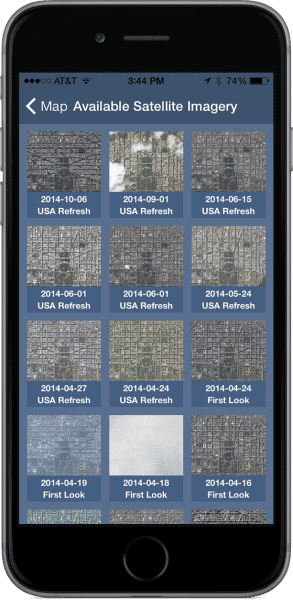Space often is viewed as a high-tech futuristic dream available only to the world's top-notch scientists. Online satellite maps, TV and GPS have snuck into common usage, but with the controlling powers being large companies or institutions. But we're now at a tipping point for making recent and tasked satellite imagery accessible to everyone, and when that happens, imagery applications will expand into an unknown variety of domains.
For recent and tasked satellite imagery to reach mainstream audiences, access needs to be timely, affordable and easy. People outside the space industry don't want to have to know satellite physics and understand space jargon such as off-nadir angle, azimuth and GSD. They know simple concepts such as location, time and money.
Modern Consumers
The most-important timeframe for modern consumers is now. People want satellite imagery that's as recent (close to now) as possible. If such imagery doesn't exist, they don't want to wait long (past now) to capture new satellite images. People are used to buying songs, apps and other electronic media, and receiving purchases in seconds (essentially now)”these same expectations apply to purchasing satellite imagery. People also want specific knowledge of the time of imagery events to synchronize events on the ground”being told that an image will be taken soon is insufficient.

Found on iTunes or Google Play, the SpyMeSat mobile app, which allows users to download or even task new satellite imagery from their smartphones, leads a new wave of how data can be acquired and purchased by common users.
With regard to cost, people will compare the value of satellite imagery to other items they purchase and assess the price accordingly. Comparing satellite imagery to other forms of photography puts it in the tens to hundreds of dollars or maybe low thousands when considering pictures ranging from family photos with Santa, school pictures, wedding photographers or modern drone imagers.
Regular modern people want to use regular modern constructs such as Web and mobile apps. People no longer are patient enough to call someone to discuss a purchase and then wait while customer-service personnel record the consumer's options, negotiate with operations personnel, and attempt to reconnect with customers. These days, consumers want a marketplace where they can see their options laid out in front of them with regard to capabilities, price and timeframe”and they want to select from these options based on the factors important to them.
Modern Tools
To meet the demands of modern consumers now familiar with simplified transactions, the geospatial industry, like many others, is moving toward more-affordable, timely and simple browsing and purchasing.
Several new commercial satellites constellations are planned for launch during the next few years, and each has unique features or capabilities. Meanwhile, the industry is developing applications to improve access to that imagery.
For example, the SpyMeSat mobile app from Orbit Logic provides a digital vending machine for satellite imagery, where consumers can browse the most-recent high-resolution imagery available on their mobile phone and choose which images they want. If the existing imagery is inadequate, users can task a satellite to take a new image by providing nothing more than a location and timeframe. Currently, the cost ranges from $10-$80 for archive imagery and $500-$1,600 for tasking new imagery, but as more satellites come online, the cost and time to acquire imagery will decrease.
With new tools and more satellites, the imaging market is at a pivot point. Soon there will be a growing number of applications providing regular people with instant imagery for uses never dreamed of in the space industry.
Ella Herz is chief operating officer, Orbit Logic; e-mail: [email protected].


